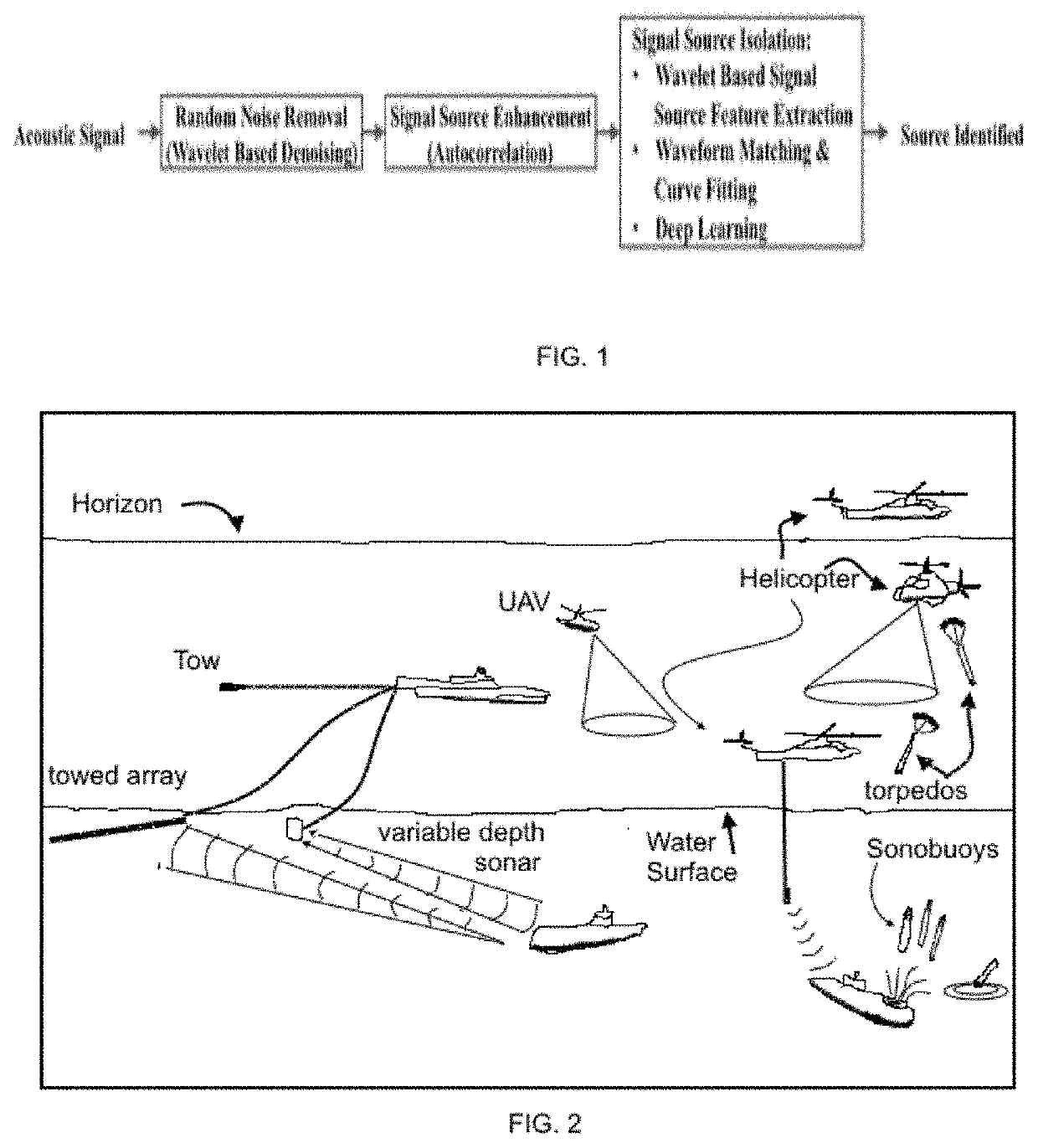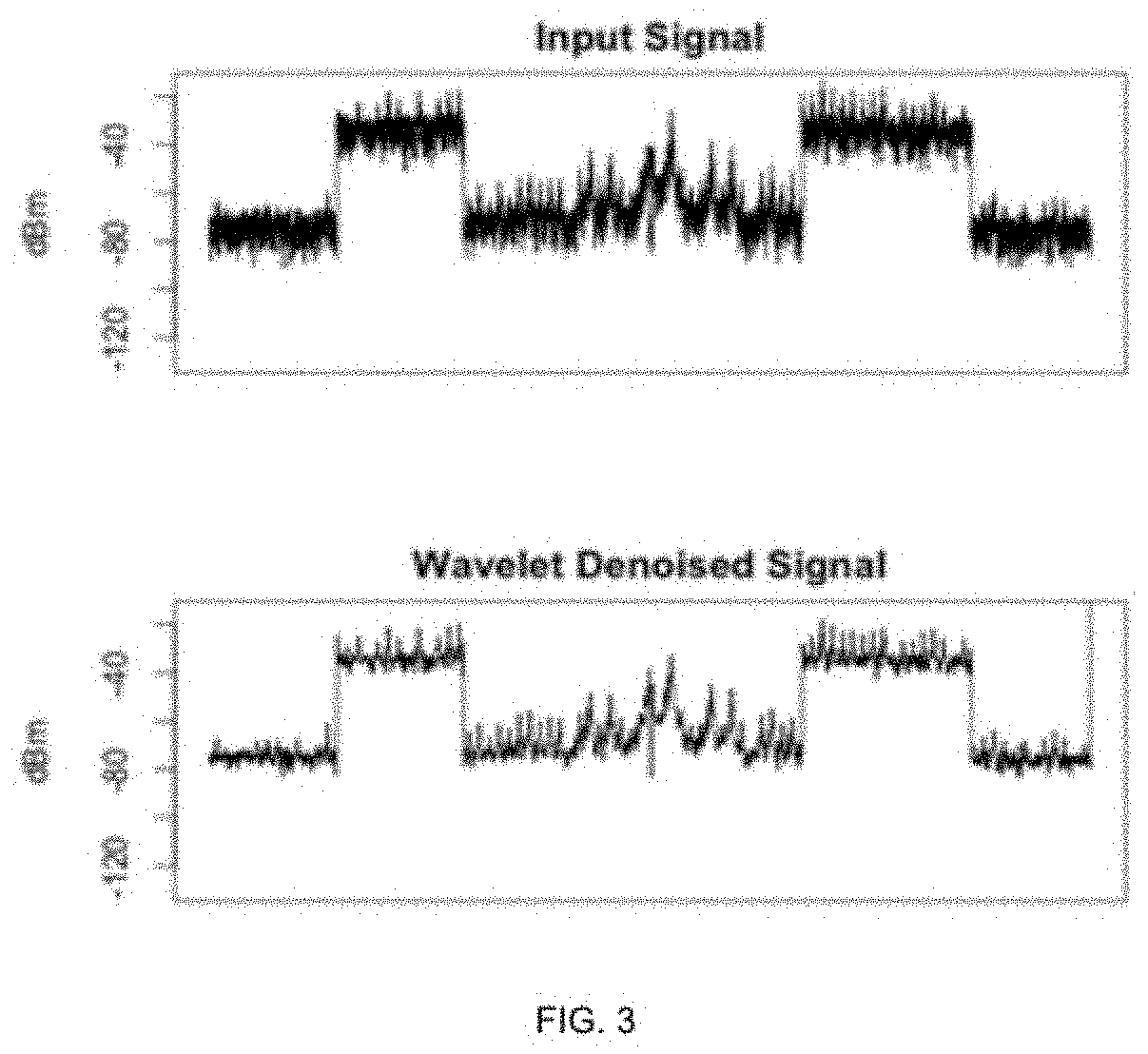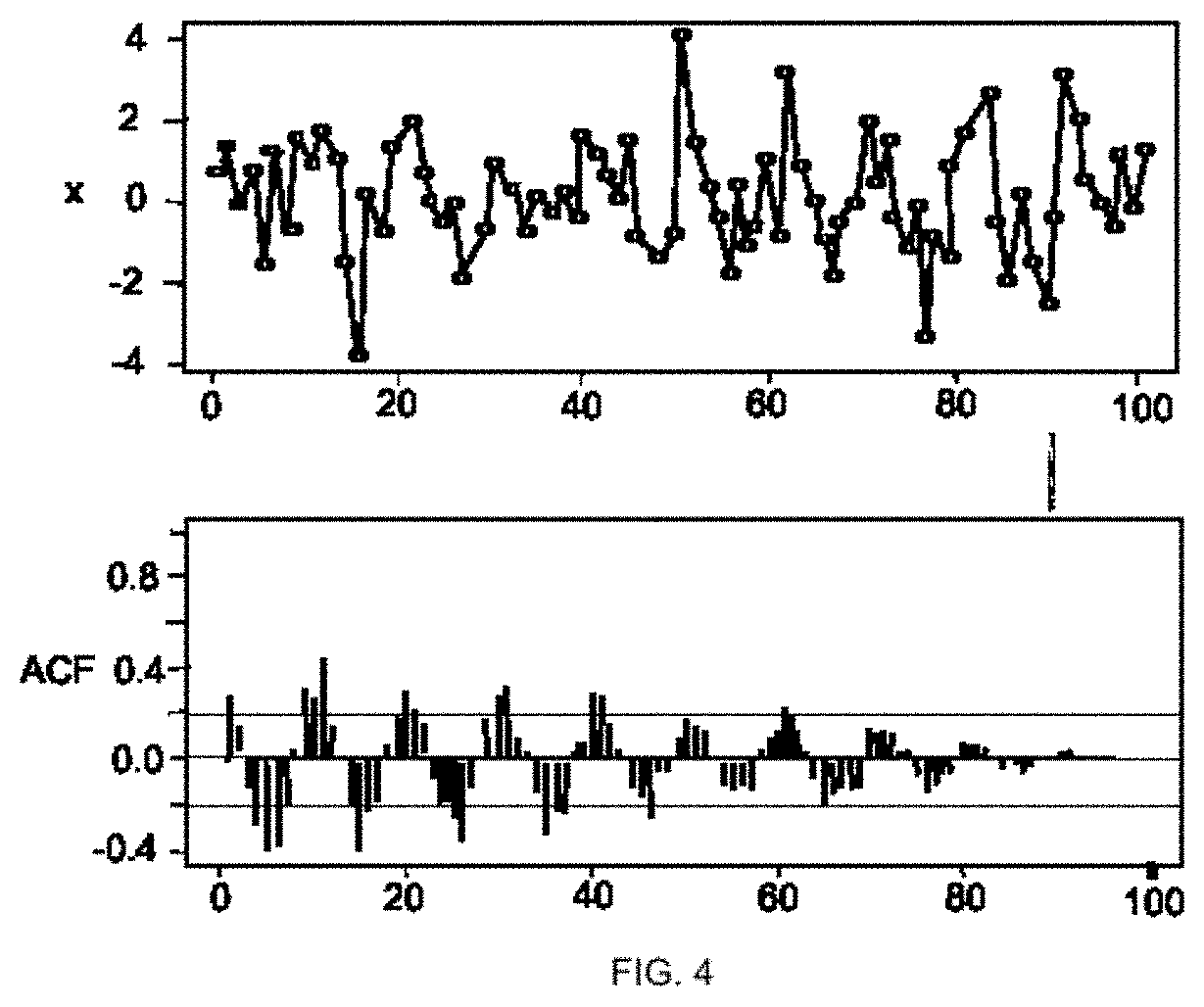Method to identify acoustic sources for Anti-submarine warfare
a technology for identifying acoustic sources and submarine warfare, applied in the field of methods to identify acoustic sources for submarine warfare, can solve problems such as passive monitoring, and achieve the effects of preserving the integrity of signals, extending the reach of naval defense, and increasing accuracy
- Summary
- Abstract
- Description
- Claims
- Application Information
AI Technical Summary
Benefits of technology
Problems solved by technology
Method used
Image
Examples
Embodiment Construction
[0013]The technical issue is to detect the presence or position of a submarine using sonobuoys. Sonobuoys register not only the sound from the target, but also a cacophony of other noises present in the ocean. Other sound sources include noise from boats, animals, waves, and wind. The sound from these non-target sources is background noise and makes the target signal difficult to isolate.
[0014]Distinguishing the signal of interest from background noise has become increasingly difficult in recent years due to the development of extremely quiet submarines. In addition to this, in some environmental conditions a submarine could hide between layers of different temperatures or different salt concentrations which can greatly influence the sound propagation and make the target even harder to detect. FIG. depicts an underwater marine battlefield. In a shallow-water archipelago, these problems are further compounded by strong reverberation effects, caused by sound reflection from the sea fl...
PUM
 Login to View More
Login to View More Abstract
Description
Claims
Application Information
 Login to View More
Login to View More - R&D
- Intellectual Property
- Life Sciences
- Materials
- Tech Scout
- Unparalleled Data Quality
- Higher Quality Content
- 60% Fewer Hallucinations
Browse by: Latest US Patents, China's latest patents, Technical Efficacy Thesaurus, Application Domain, Technology Topic, Popular Technical Reports.
© 2025 PatSnap. All rights reserved.Legal|Privacy policy|Modern Slavery Act Transparency Statement|Sitemap|About US| Contact US: help@patsnap.com



